Experimental Investigation on Ablation Behaviors of CFRP Laminates in an Atmospheric Environment Irradiated by Continuous Wave Laser
Abstract
1. Introduction
2. Materials and Specimens
3. Experimental Equipment and Measuring Systemtimes
4. Results and Discussion
4.1. Optical Performance
4.2. Ablation Behavior and Ablation Morphologies
4.3. Internal Delamination Damage and Failure Mechanism
4.4. Temperature Field of CFRP during Laser Irradiation
5. Conclusions
- The HAZ of CFRP laminated plates and ablation crater depth increases with incident laser power. The ablation mass and the mass ablation rate increase with the incident laser power. When the laser power is 250 W, it is found that the ablation crater depth is negative, indicating that the CFRP laminates have a bulging phenomenon. When the laser power reaches 750 W, it is found that the ablation crater depth exceeds the thickness of the CFRP laminate.
- With the increase of the incident laser power, the HAZ area of CFRP laminates increases obviously, and the heat conduction along the plane leads to different degrees of delamination damage outside the HAZ. The dimensionless result of the HAZ area varies along the thickness direction; the HAZ decreases gradually along the thickness of the laser irradiation surface; the decrease rate of HAZ slows down after 1.2 mm; and the damage degree in the layer reduces significantly. At low laser power density, the HAZ increases obviously with increasing the laser power density; at higher laser power density, the HAZ does not significantly increase as the laser power density increases but will increase the damage degree of the HAZ.
- The IR camera is reliable for measuring the CFRP back surface temperature. The temperature rising rate is largest in the center of the CFRP laminated back surface. The temperature rise rate at the central point of the CFRP laminated front surface can reach 106 °C/s, and the one at the back surface is at the level of 100 °C/s. The thermal conductivity of the CFRP laminates is low.
Author Contributions
Funding
Institutional Review Board Statement
Informed Consent Statement
Data Availability Statement
Acknowledgments
Conflicts of Interest
References
- Xie, W.; Zhang, W.; Kuang, N.; Li, D.; Huang, W.; Gao, Y.; Ye, N.; Guo, L.; Ren, P. Experimental investigation of normal and oblique impacts on CFRPs by high velocity steel sphere. Compos. B 2016, 99, 483–493. [Google Scholar] [CrossRef]
- Huang, W.; Zhang, W.; Chen, T.; Jiang, X.; Liu, J. Dynamic response of circular composite laminates subjected to underwater impulsive loading. Compos. Part A Appl. Sci. Manuf. 2018, 109, 63–74. [Google Scholar] [CrossRef]
- Xie, W.B.; Zhang, W.; Guo, L.C.; Gao, Y.B.; Li, D.C.; Jiang, X.W. The shock and spallation behavior of a carbon fiber reinforced polymer composite. Compos. B 2018, 153, 176–183. [Google Scholar] [CrossRef]
- Xie, W.; Zhang, W.; Yang, H.; Wei, H.; Wang, L.; Gao, Y.; Cai, X. Experimental investigation of high velocity impact response of CFRP laminates subjected to flyer plate impact. Thin-Walled Struct. 2022, 178, 109521. [Google Scholar] [CrossRef]
- Griffis, C.A.; Masumura, R.A.; Chang, C.I. Thermal response of graphite epoxy composite subjected to rapid heating. J. Compos. Mater. 1981, 15, 427–442. [Google Scholar] [CrossRef]
- Chen, B.; Wan, H.; Mu, J.; Bai, S. Ablative mechanism of carbonfiber/ epoxy composite irradiated by repetition frequency laser. High Power Laser Part. Beams 2008, 20, 547–552. [Google Scholar]
- Mu, J.Y.; Wan, H.; Bai, S.H.X. Thermal ablation law of cured epoxy under long pulse laser irradiation. Power Laser Part. Beam 2008, 20, 36–40. [Google Scholar]
- Han, J.C.; He, X.D.; Du, S.Y. Oxidation and ablation of 3D carbon-carbon composite at up to 3000 °C. Carbon 1995, 33, 473–478. [Google Scholar] [CrossRef]
- Bernard, L. Laser pyrolysis and ablation of composite materials. Proc. SPIE 1989, 1064, 45–53. [Google Scholar]
- Wan, H.; Hu, K.; Mu, J.; Bai, S. Damage analysis of fiber reinforced resin matrix composites irradiated by CW laser. High Power Laser Part. Beams 2008, 20, 6–10. [Google Scholar]
- Guo, Y.L.; Liang, G.Z.H.; Qiu, Z.H.M. Effect of laser parameters on mass ablative rate of carbon fiber reinforced composite. Acta Mater. Compos. Sin. 2006, 23, 84–88. [Google Scholar]
- Li, Y.; Wu, P.; Ma, X. The tests of carbon fiber/ epoxy laminated composites under continuous laser irradiation. Fiber Compos. 2010, 21, 21–24. [Google Scholar]
- Kibler, K.G.; Carer, H.G.; Eisenmann, J.R. Response of Graphite Composites to Laser Radiation; Materials Research Laboratory: Fort Worth, TX, USA, 1997. [Google Scholar]
- Kedir, N.; Hernandez, J.A.; Lim, B.H.; Gao, J.; Zhai, X.; Nie, Y.; Issahaq, M.N.; Tallman, T.N.; Chen, W.W. Effect of laser irradiation time on the surface characteristics of a carbon fiber composite. J. Laser Appl. 2021, 33, 042034. [Google Scholar] [CrossRef]
- He, M.; Ma, Z.; Chen, L.; Lin, X.; Zhou, M. Experimental investigation on thermal ablation of carbon-fiber/epoxy composite irradiated by continuous wave laser. Third Int. Symp. Laser Interact. Matter 2015, 9543, 70–76. [Google Scholar] [CrossRef]
- Zhao, W.; Ma, T.; Song, H.; Yuan, W.; Wang, R.; Wang, Z.; Lu, L.; Huang, C. Effects of tangential supersonic airflow on the laser ablation of laminated CFRP. J. Mater. Res. Technol. 2021, 14, 1985–1997. [Google Scholar] [CrossRef]
- Almuhammadi, K.; Selvakumaran, L.; Alfano, M.; Yang, Y.; Bera, T.K.; Lubineau, G. Laser-based surface preparation of composite laminates leads to improved electrodes for electrical measurements. Appl. Surf. Sci. 2015, 359, 388–397. [Google Scholar] [CrossRef]
- Foster, P.; Abdelal, G.; Murphy, A. Understanding how arc attachment behaviour influences the prediction of composite specimen thermal loading during an artificial lightning strike test. Compos. Struct. 2018, 192, 671–683. [Google Scholar] [CrossRef]
- Koyanagi, J.; Shinba, K.; Fukuda, Y.; Hirai, K.; Nakazato, A.; Yoshimura, A.; Aoki, T.; Kogo, Y. A Numerical simulation of delamination caused by internal gas pressure for mid-density CFRP. Compos. Part A Appl. Sci. Manuf. 2018, 115, 255–263. [Google Scholar] [CrossRef]
- Park, J.M.; Kwon, D.-J.; Wang, Z.-J.; Roh, J.-U. Effects of carbon nanotubes and carbon fiber reinforcements on thermal conductivity and ablation properties of carbon/phenolic composites. Compos. Part B-Eng. 2014, 67, 22–29. [Google Scholar] [CrossRef]
- Schanz, J.; Gooßen, M.; Meinhard, D.; Harrison, D.K.; De Silva, A.; Knoblauch, V.; Riegel, H. Laser-based Surface Treatment of CFRP and Aluminum for Adhesively Bonded Hybrid Joints. In Proceedings of the Conference on Laser-based Micro- and Nanoprocessing XIV, San Francisco, CA, USA, 3–6 February 2020. [Google Scholar]
- Bello, I.; Alowayed, Y.; Albinmousa, J.; Lubineau, G.; Merah, N. Fatigue crack growth in laser-treated adhesively bonded composite joints: An experimental examination. Int. J. Adhes. Adhes. 2020, 105, 102784. [Google Scholar] [CrossRef]
- Ledesma, R.; Yost, W.T.; Palmieri, F.L.; Connell, J.W. Correlation of optically stimulated electron emission with failure mode of adhesively bonded epoxy composites. Int. J. Adhes. Adhes. 2018, 84, 257–264. [Google Scholar] [CrossRef]
- Sun, C.; Min, J.; Lin, J.; Wan, H.; Yang, S.; Wang, S. The effect of laser ablation treatment on the chemistry, morphology and bonding strength of CFRP joints. Int. J. Adhes. Adhes. 2018, 84, 325–334. [Google Scholar] [CrossRef]
- Moreira, R.; Oliveira, V.; Silva, F.; Vilar, R.; de Moura, M. Mode II fracture toughness of carbon–epoxy bonded joints with femtosecond laser treated surfaces. Int. J. Mech. Sci. 2018, 148, 707–713. [Google Scholar] [CrossRef]
- Ecault, R.; Boustie, M.; Berthe, L.; Touchard, F. Laser Shock Waves: A Way To Test And Damage Composite Materials For Aeronautic Applications. AIP Conf. Proc. 2012, 1464, 126–137. [Google Scholar]
- Schanz, J.; Meinhard, D.; Dostal, I.; Riegel, H.; De Silva, A.K.M.; Harrison, D.K.; Knoblauch, V. Comprehensive study on the influence of different pretreatment methods and structural adhesives on the shear strength of hybrid CFRP/aluminum joints. J. Adhes. 2022, 98, 1772–1800. [Google Scholar] [CrossRef]
- Abdulganiyu, I.; Oguocha, I.; Odeshi, A. Influence of microfillers addition on the flexural properties of carbon fiber reinforced phenolic composites. J. Compos. Mater. 2021, 55, 3973–3988. [Google Scholar] [CrossRef]
- Botana-Galvín, M.; Blanco, G.; González-Rovira, L.; Rodríguez, M.A.; Botana, F.J. Adhesive behaviour of carbon fibre reinforced plastic panels manufactured using woven and unidirectional tape after ultraviolet laser surface treatment. J. Compos. Mater. 2018, 52, 853–865. [Google Scholar] [CrossRef]
- Gebauer, J.; Burkhardt, M.; Franke, V.; Lasagni, A.F. On the Ablation Behavior of Carbon Fiber-Reinforced Plastics during Laser Surface Treatment Using Pulsed Lasers. Materials 2020, 13, 5682. [Google Scholar] [CrossRef]
- Li, X.; Hou, W.; Han, B.; Xu, L.; Li, Z.; Nan, P.; Ni, X. Investigation on the Continuous Wave Mode and the ms Pulse Mode Fiber Laser Drilling Mechanisms of the Carbon Fiber Reinforced Composite. Polymers 2020, 12, 706. [Google Scholar] [CrossRef]
- Xu, H.B.; Hu, J. Study of Polymer Matrix Degradation Behavior in CFRP Short Pulsed Laser Processing. Polymers 2016, 8, 299. [Google Scholar] [CrossRef]
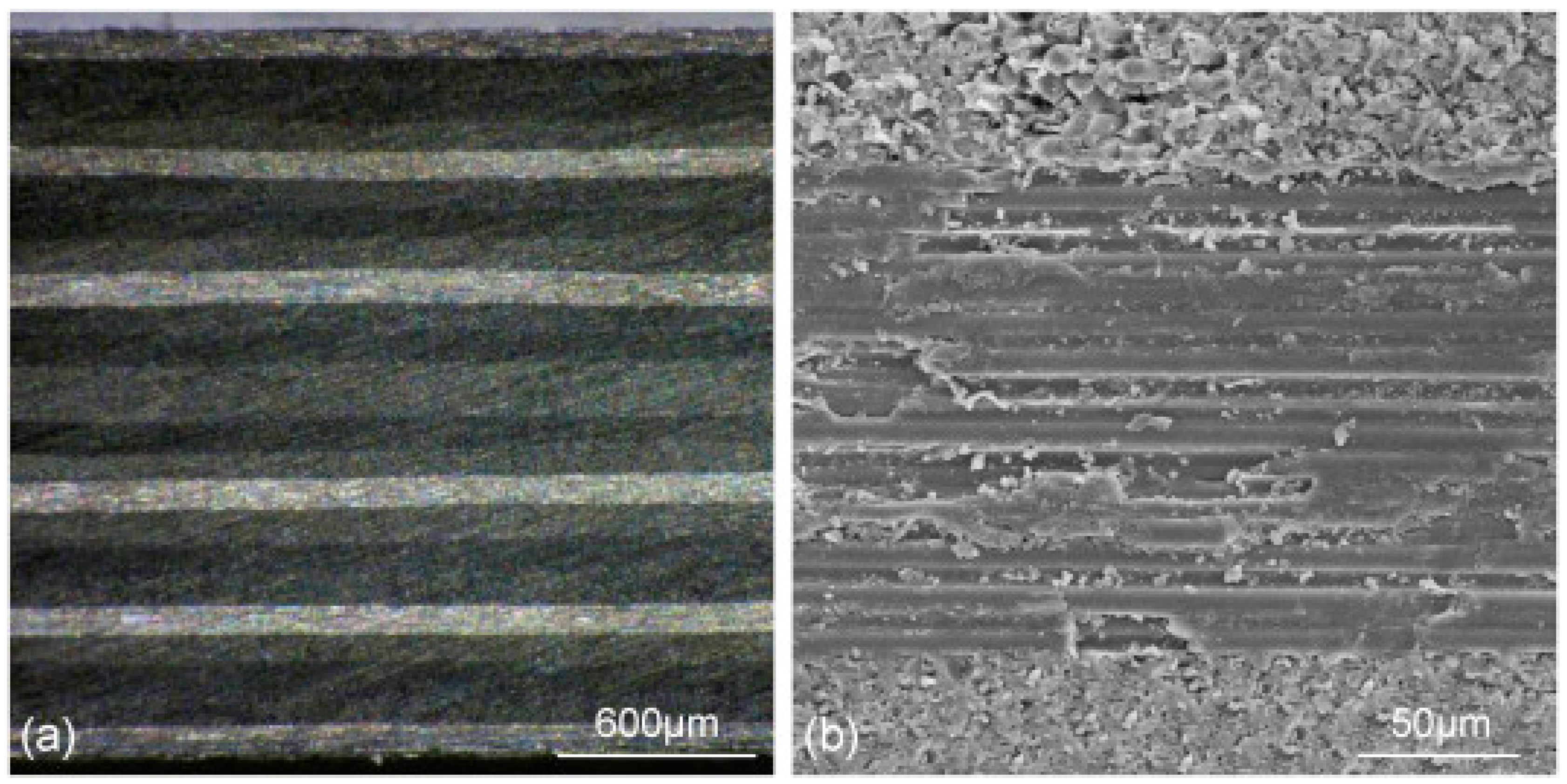
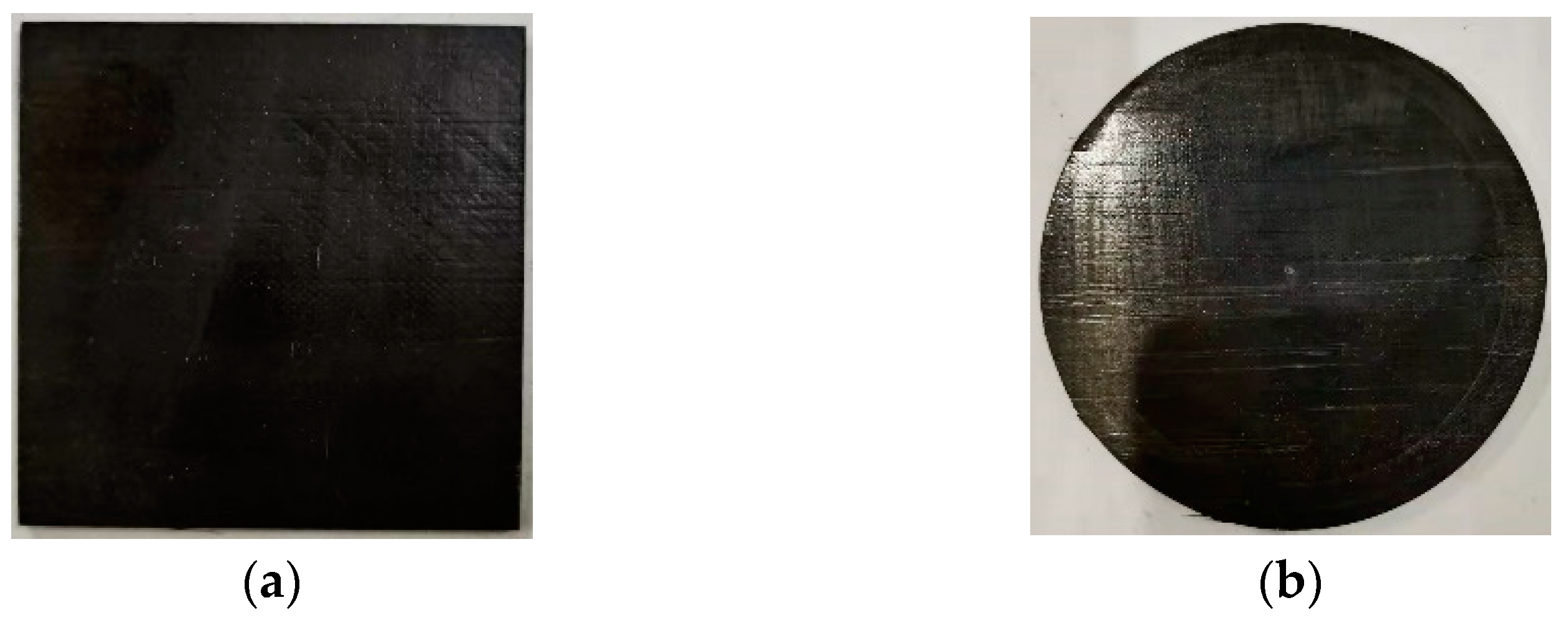
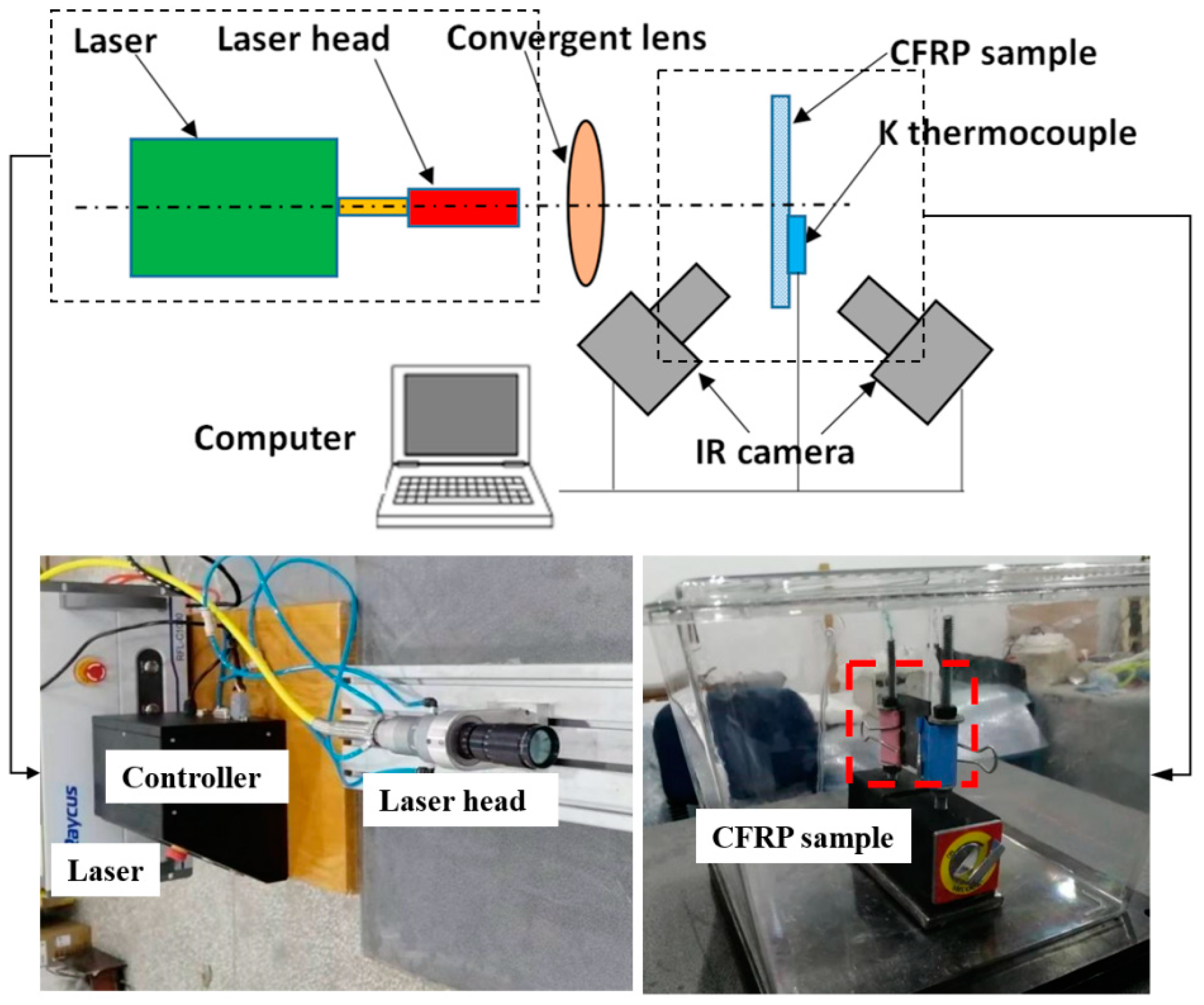
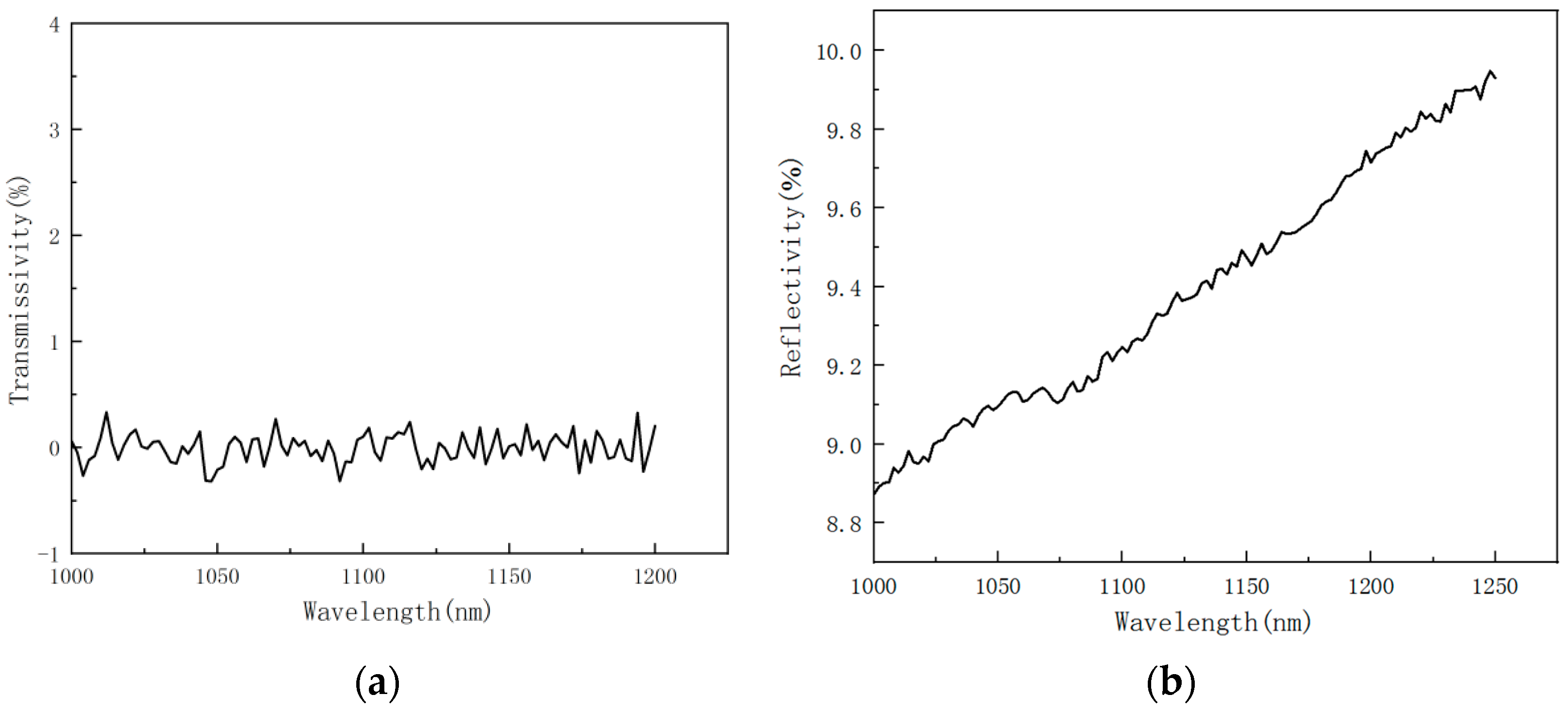

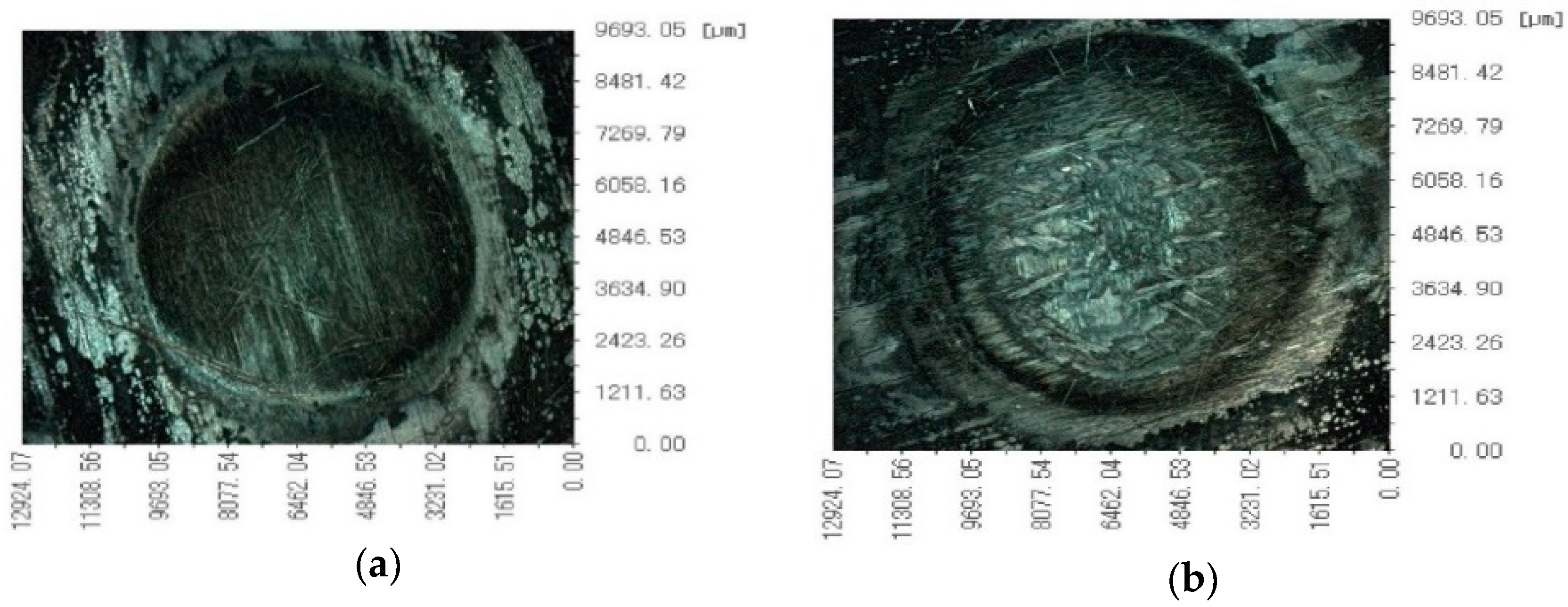
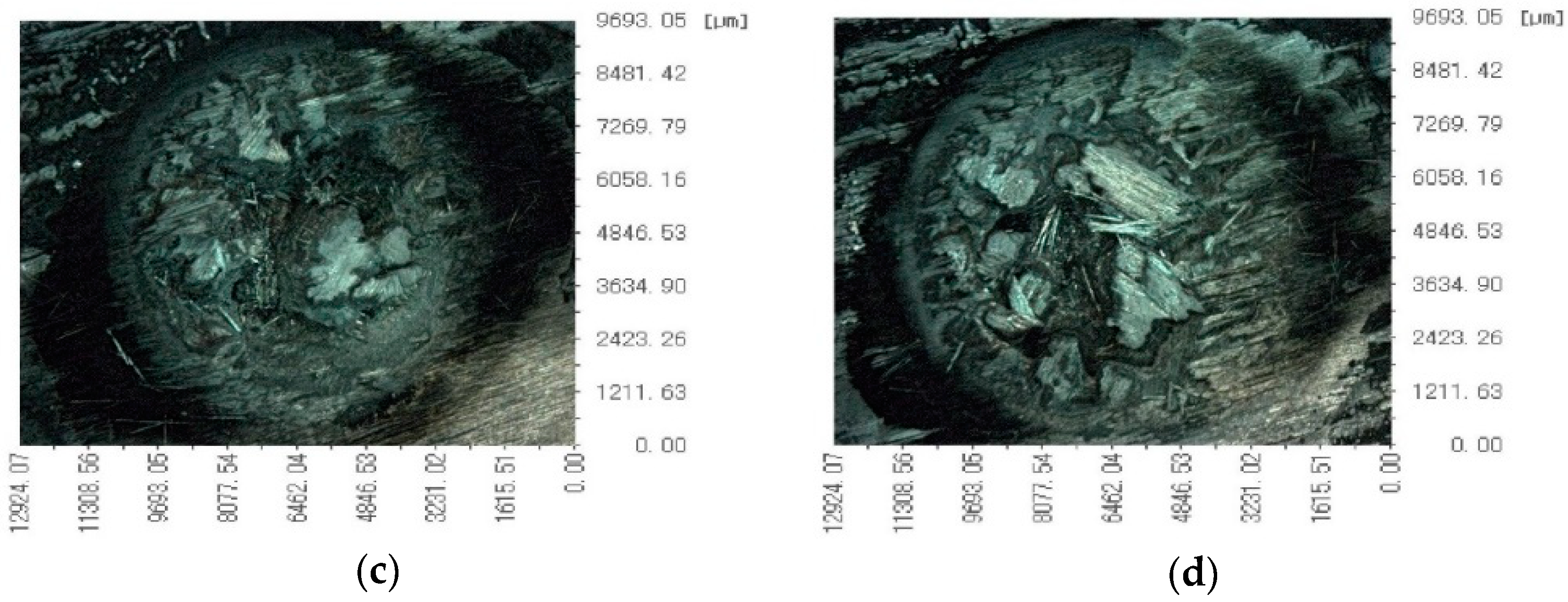
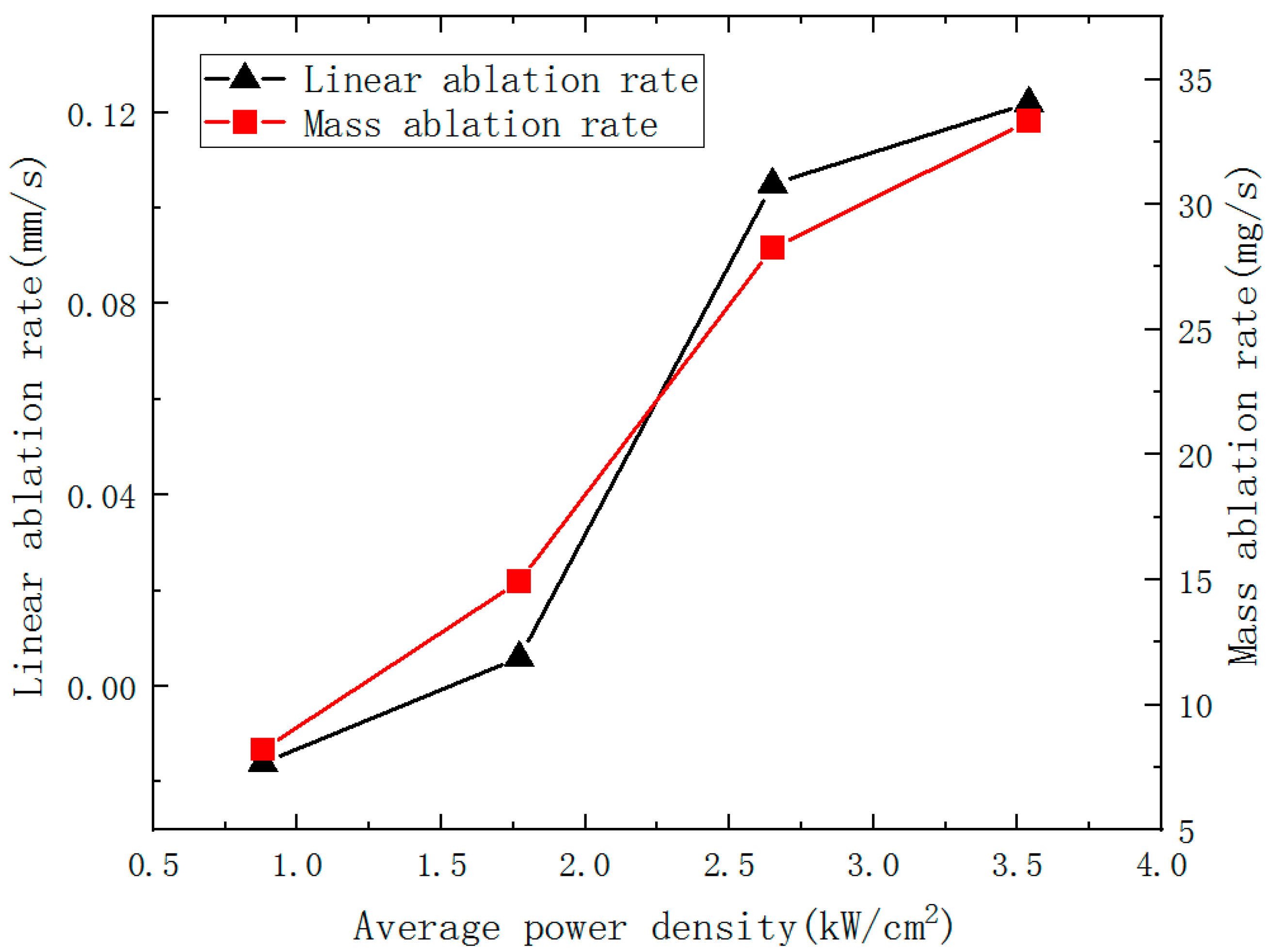


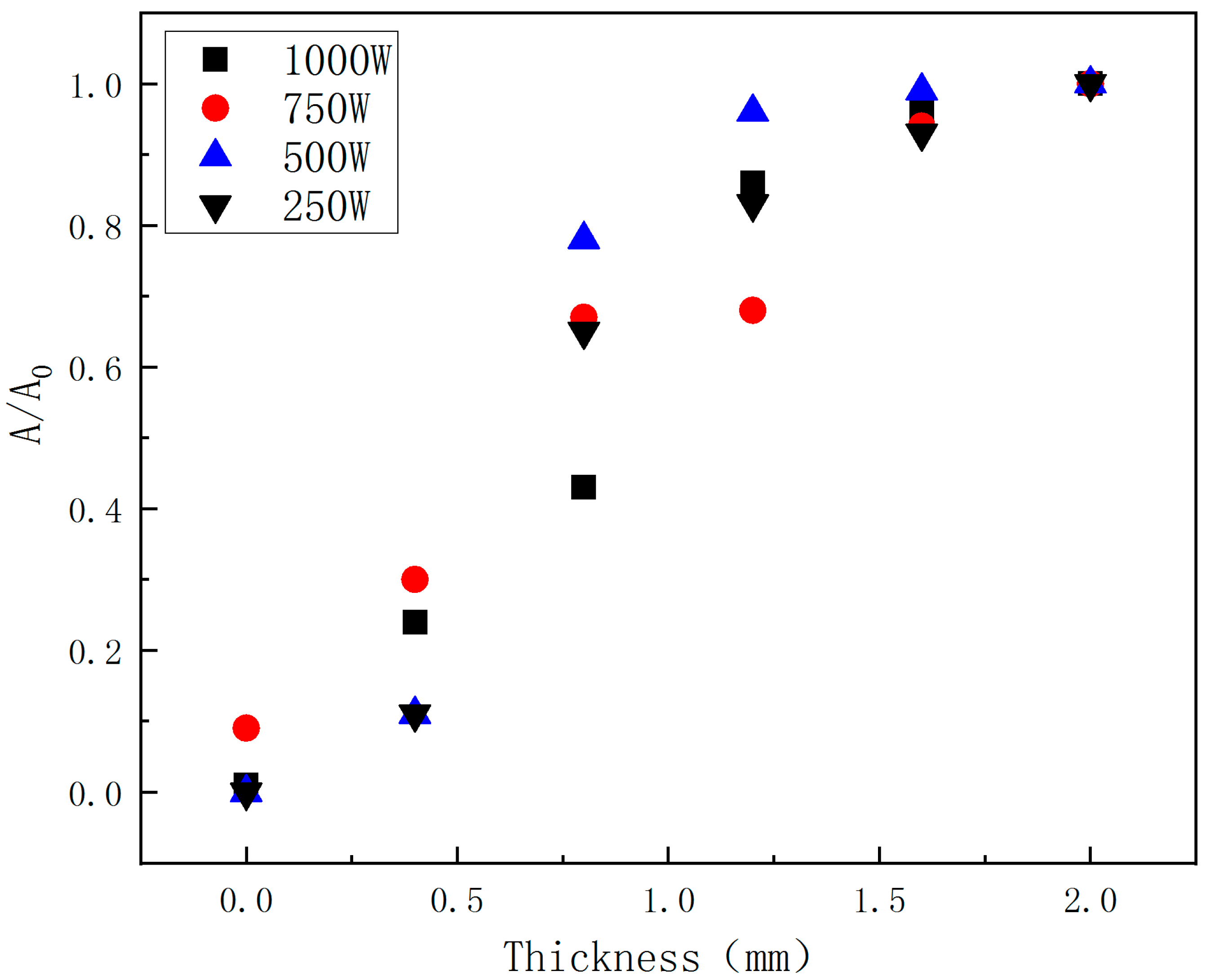
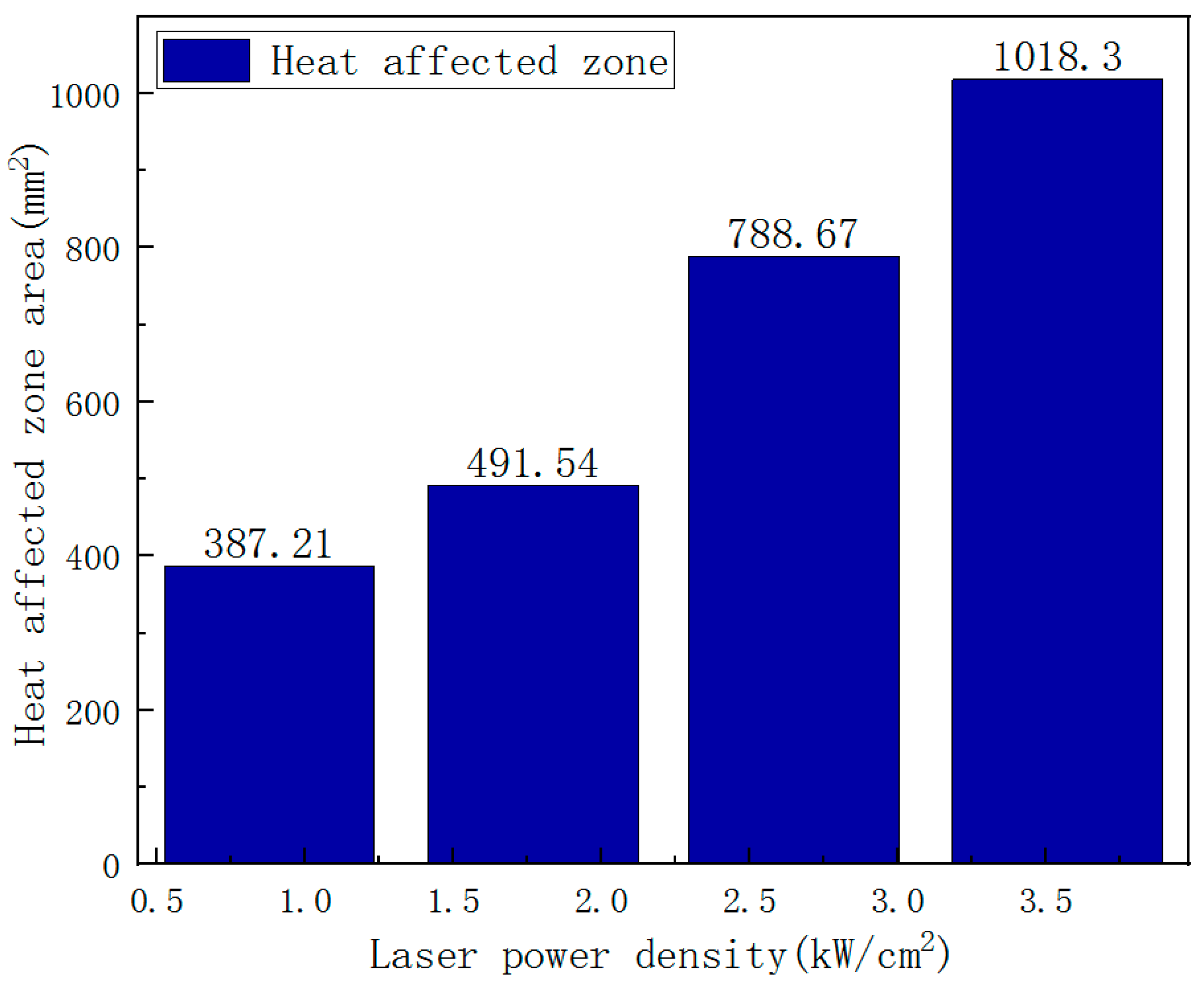
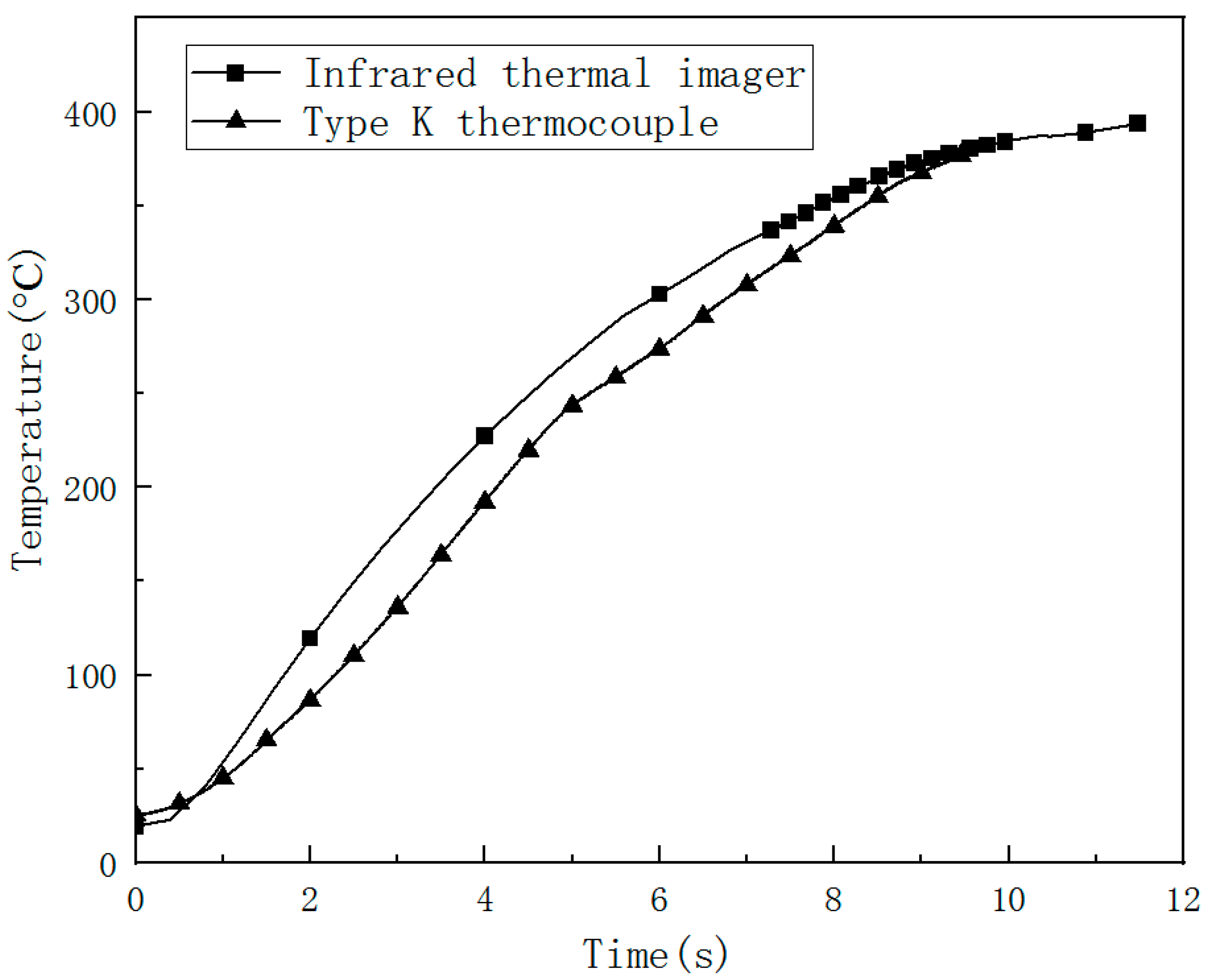
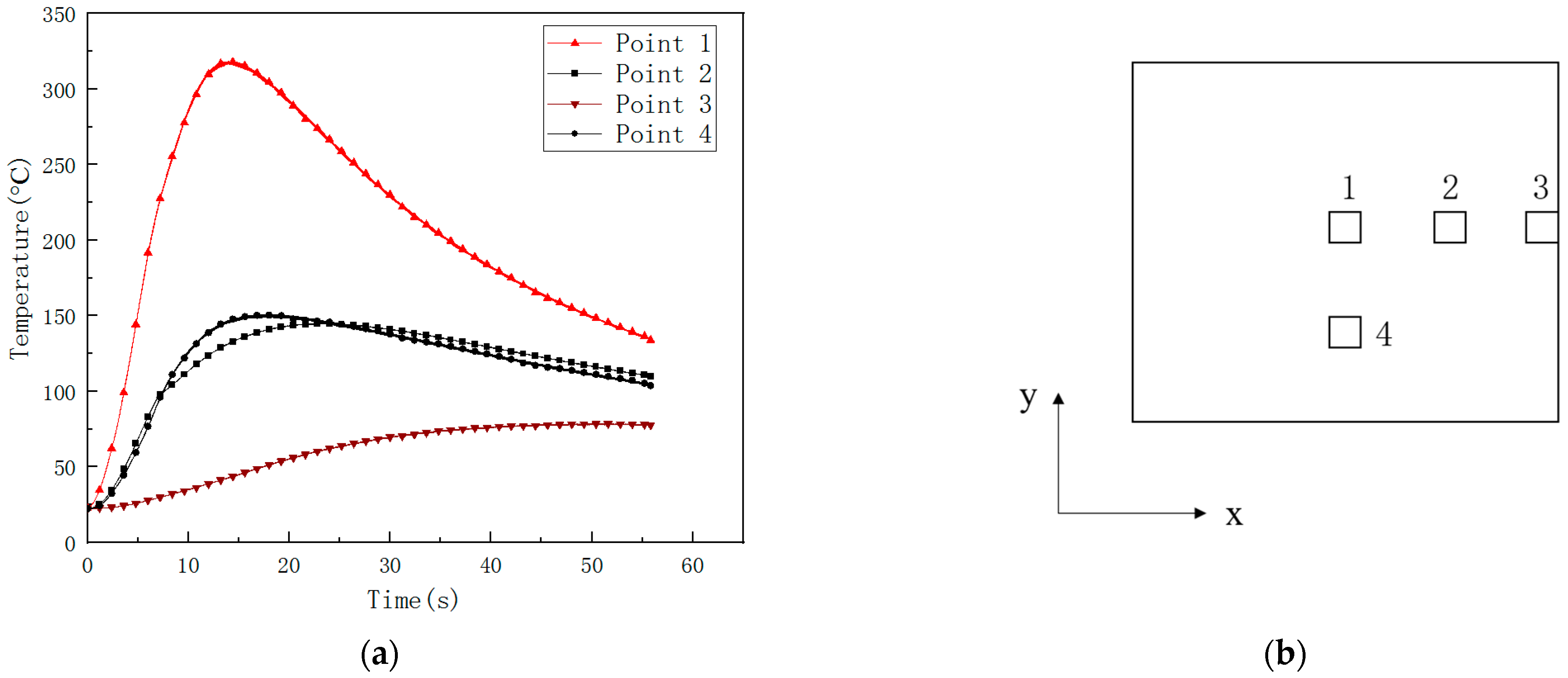

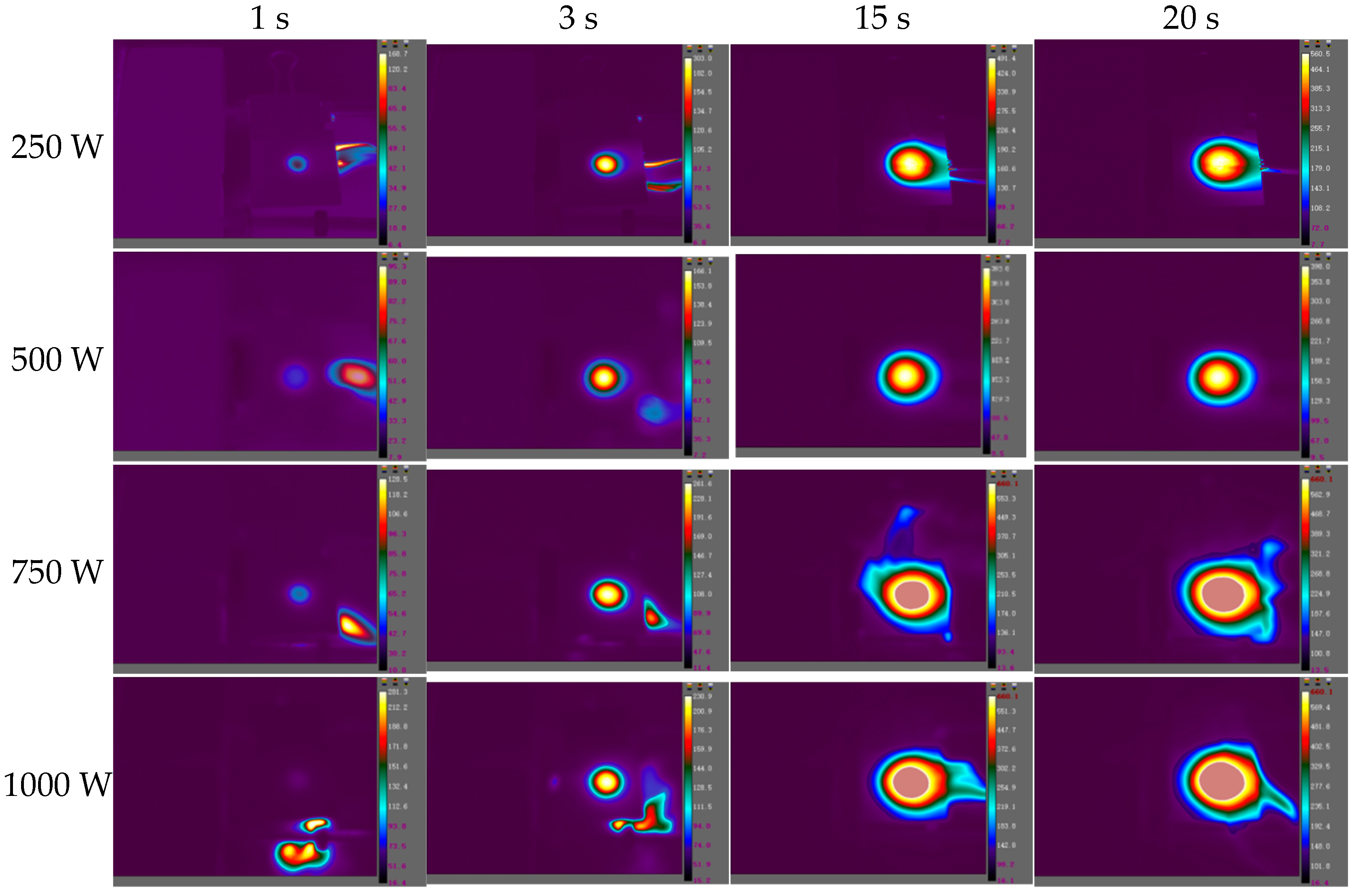
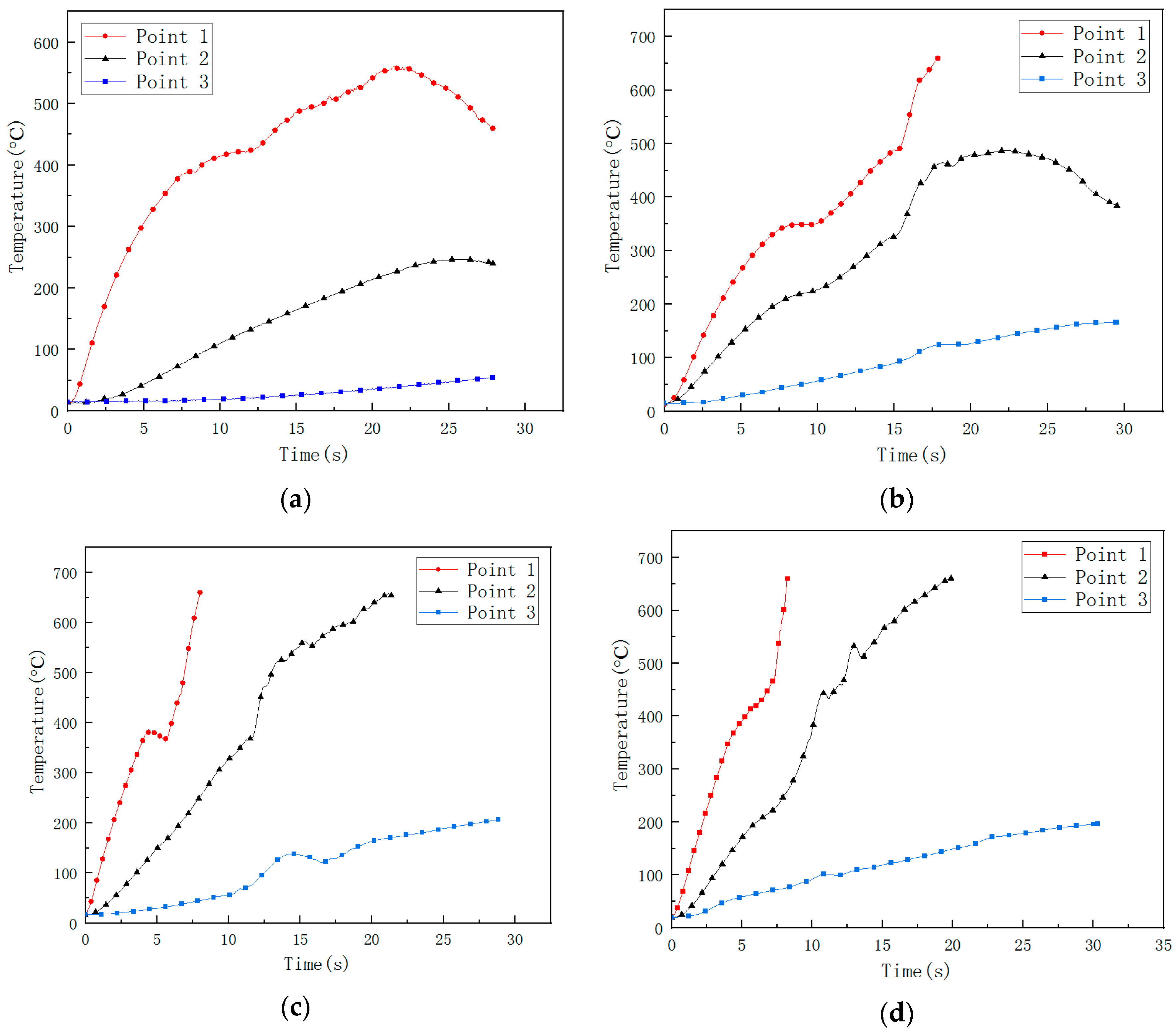

| Property | Value |
|---|---|
| Fiber volume fraction | 60% |
| Longitudinal stiffness, E1 (GPa) | 132 |
| Transverse stiffness, E2 (GPa) | 11 |
| Poisson’s ratio, v12 | 0.29 |
| Shear modulus, G12 (GPa) | 5.2 |
| Longitudinal tensile strength, Xt (MPa) | 2178 |
| Longitudinal compressive strength, Xc (MPa) | 1039 |
| Transverse tensile strength, Yt (MPa) | 24 |
| Transverse compressive strength, Yc (MPa) | 168 |
| Interlaminar shear strength, S (MPa) | 81 |
| Density, ρ (kg/m3) | 1600 |
| Longitudinal sound velocity, cL (mm/μs) | 3.212 |
| Shear sound velocity, cS (mm/μs) | 1.472 |
| Bulk sound velocity, cB (mm/μs) | 2.725 |
| Activation energy of carbon fiber EAf (J/kg) | 1.55 × 105 |
| Gasification coefficient of carbon fiber Γf | 1 |
| Reaction preexponential factor of carbon fiber Jf (kg·m−3·s−1) | 4.2 × 106 |
| Activation energy of epoxy matrix EAb (J/kg) | 1.75 × 105 |
| Gasification coefficient of epoxy matrix Γb | 1 |
| Reaction preexponential factor of epoxy matrix Jb (kg·m−3·s−1) | 6.0 × 106 |
| Power (W) | Power Density (kW/cm2) | Crater Depth (mm) | Ablation Mass (g) | Ablation Rate (mm/s) | Mass Ablation Rate (mg/s) | Thermal Ablation Rate (10−2 mg/J) |
|---|---|---|---|---|---|---|
| 250 | 0.88 | −0.32 | 0.1642 | −0.016 | 8.21 | 3.28 |
| 500 | 1.77 | 0.11 | 0.2985 | 0.006 | 14.93 | 2.99 |
| 750 | 2.65 | 2.10 | 0.5652 | 0.105 | 28.26 | 3.77 |
| 1000 | 3.54 | 2.44 | 0.6666 | 0.122 | 33.33 | 3.33 |
| 1000 | 3.54 | perforation | — | — | — | — |
Publisher’s Note: MDPI stays neutral with regard to jurisdictional claims in published maps and institutional affiliations. |
© 2022 by the authors. Licensee MDPI, Basel, Switzerland. This article is an open access article distributed under the terms and conditions of the Creative Commons Attribution (CC BY) license (https://creativecommons.org/licenses/by/4.0/).
Share and Cite
Zhang, Y.; Pan, J.; Zhou, S.; Yin, Q.; Zhang, J.; Xie, W.; Tan, F.; Zhang, W. Experimental Investigation on Ablation Behaviors of CFRP Laminates in an Atmospheric Environment Irradiated by Continuous Wave Laser. Polymers 2022, 14, 5082. https://doi.org/10.3390/polym14235082
Zhang Y, Pan J, Zhou S, Yin Q, Zhang J, Xie W, Tan F, Zhang W. Experimental Investigation on Ablation Behaviors of CFRP Laminates in an Atmospheric Environment Irradiated by Continuous Wave Laser. Polymers. 2022; 14(23):5082. https://doi.org/10.3390/polym14235082
Chicago/Turabian StyleZhang, Yongqiang, Jinwu Pan, Shuhan Zhou, Qianfeng Yin, Jialei Zhang, Wenbo Xie, Fuli Tan, and Wei Zhang. 2022. "Experimental Investigation on Ablation Behaviors of CFRP Laminates in an Atmospheric Environment Irradiated by Continuous Wave Laser" Polymers 14, no. 23: 5082. https://doi.org/10.3390/polym14235082
APA StyleZhang, Y., Pan, J., Zhou, S., Yin, Q., Zhang, J., Xie, W., Tan, F., & Zhang, W. (2022). Experimental Investigation on Ablation Behaviors of CFRP Laminates in an Atmospheric Environment Irradiated by Continuous Wave Laser. Polymers, 14(23), 5082. https://doi.org/10.3390/polym14235082






